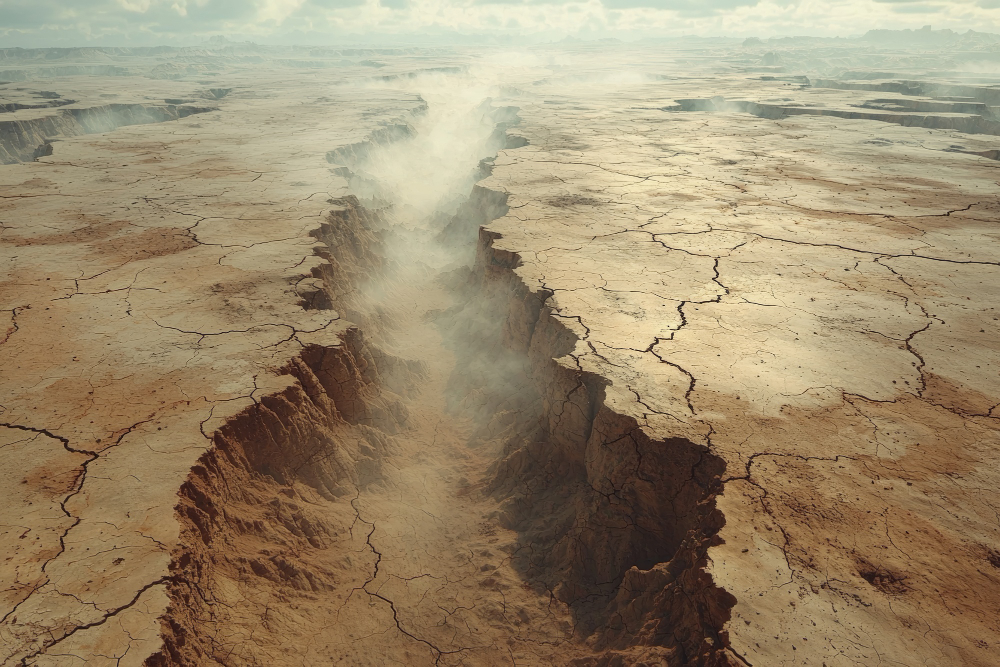The Mighty Megathrust: Unraveling the Earth’s Most Powerful Earthquakes
The Earth’s floor, a apparently solid and strong ground beneath our ft, is in reality a dynamic and ever-converting machine. This consistent movement, pushed by the gradual yet powerful forces within our planet, manifests in various methods, including the amazing phenomenon of earthquakes. While so much tremors are quite slight, some succeed in catastrophic proportions, unleashing unimaginable potential and leaving in the back of a trail of devastation. Among these potent earthquakes, a extraordinary and especially risky kind stands out: the megathrust earthquake.
Diving into the Depths: Understanding Plate Tectonics
To hold the mechanics of megathrust earthquakes, we need to first delve into the captivating realm of plate tectonics. Our planet’s outer layer, the lithosphere, is not a single, monolithic shell but as a substitute a mosaic of massive plates that continuously have interaction with every single other. These plates, ranging in dimension from some hundred kilometers to hundreds of kilometers, are in perpetual motion, driven by potent convection currents in the Earth’s mantle.
This slow-motion dance of tectonic plates, called plate tectonics, is chargeable for shaping the Earth’s continents, developing mountains, and riding volcanic undertaking. It additionally governs the occurrence of earthquakes, which might be essentially the unexpected unencumber of potential accrued during the slow, grinding motion of those plates against each other.
Megathrusts: Where Plates Collide
There are 3 most important varieties of plate limitations: divergent, where plates circulate aside; convergent, where plates collide; and transform, where plates slide beyond every single other. Megathrust earthquakes occur at convergent boundaries, mainly at subduction zones, where one plate dives underneath some other.
Imagine two massive tectonic plates, one denser than the opposite, slowly drawing close every single other. As they collide, the denser plate, normally an oceanic plate, plunges beneath the lighter plate, which may be both oceanic or continental. This technique, called subduction, is characterised by a unique zone of severe deformation and strain.
The descending plate, or slab, descends into the Earth’s mantle, dragging the overriding plate together with it. This downward pull creates a steep angle alongside the subduction zone, ultimate to a titanic construct-up of force and pressure. This energy, trapped within the Earth’s crust, can remain locked for hundreds of years, watching for the instant of free up.
The Explosive Release: Megathrust Earthquakes
Megathrust earthquakes are an instantaneous outcome of this accumulated strain. When the force exceeds the frictional energy of the fault zone, the plates abruptly rupture, causing a fast and violent displacement along the megathrust fault. This sudden move releases gigantic strength, generating seismic waves that shuttle outwards by the Earth’s crust, causing the floor to shake and doubtlessly most desirable to catastrophic destruction.
Megathrust earthquakes are characterized by their immense measurement, many times ranging from 8 to 9 at the Richter scale. These earthquakes often final for numerous minutes and may cause devastating tsunamis, because the sudden displacement of the sea surface creates large waves that propagate across giant distances.
Understanding the Mechanics: Slip and Rupture
To absolutely cling the power of megathrust earthquakes, we need to recognize the concept of slip and rupture. Slip refers to the quantity of move that takes place along the fault throughout the earthquake. In megathrust earthquakes, slip distances can achieve tens of meters, creating sizeable shifts within the Earth’s crust.
Rupture, alternatively, describes the location of the fault that studies this sudden movement. The larger the rupture zone, the extra the potential released and the more potent the earthquake. Megathrust earthquakes can rupture thousands of kilometers of fault, spanning vast areas.
Impact Zones: Where the Ground Shakes
Megathrust earthquakes are not restricted to the immediately vicinity of the fault rupture. The seismic waves generated by these events commute by means of the Earth, causing ground shaking over extensive components. The intensity of shaking decreases with distance from the epicenter, yet even distant regions can experience extensive ground movement, particularly if the fault rupture is sizable.
The parts so much seriously impacted by megathrust earthquakes are usually positioned on the overriding plate, toward the subduction zone. These regions can experience intense ground shaking, landslides, and liquefaction – a phenomenon where soil loses its potential and behaves like liquid.
Tsunamis: The Devastating Aftershocks
One of probably the most devastating consequences of megathrust earthquakes is the generation of tsunamis. These huge ocean waves are caused by the sudden vertical displacement of the seafloor during the earthquake. The power published by the megathrust earthquake disrupts the ocean floor, creating a substantial wave that travels outwards at top speeds.
Tsunamis can travel across whole oceans, achieving far away coastlines hours after the earthquake. They are characterized by their long wavelength and the truth that they could travel at speeds exceeding 700 kilometers consistent with hour. As they approach shallow coastal areas, they slow down but growth in height, creating towering waves that may inundate coastal regions, causing tremendous destruction.
Megathrusts Around the World: Areas of High Risk
Megathrust earthquakes are a worldwide phenomenon, going on along the sector’s principal subduction zones. These zones are often found round the rims of the Pacific Ocean, referred to as the “Ring of Fire,” in addition to in the Mediterranean Sea and the Caribbean.
Some of probably the most prominent megathrust earthquake zones include:
- The Cascadia Subduction Zone: Extending from northern California to Vancouver Island, Canada, this zone is capable of producing magnitude 9 earthquakes that could devastate the Pacific Northwest.
- The Nankai Trough: Located off the coast of Japan, this subduction zone has produced severa devastating earthquakes, together with the 2011 Tohoku earthquake, one of the strongest ever recorded.
- The Sumatra-Andaman Subduction Zone: Stretching from Myanmar to Indonesia, this zone become accountable for the 2004 Indian Ocean tsunami, which killed hundreds of hundreds of human beings.
- The Chile Trench: This subduction zone along the western coast of South America has produced some of the biggest earthquakes in recorded records, together with the 1960 Valdivia earthquake, the most effective earthquake ever measured.
Predicting the Unpredictable: The Challenge of Early Warning
Despite the devastating potential of megathrust earthquakes, predicting their occurrence remains a prime clinical task. While scientists can pick out areas prone to these occasions, predicting their timing and magnitude with prime accuracy is still beyond our reach.
However, steady tracking of seismic pastime, ground deformation, and other precursory alerts can supply precious facts about ability earthquake threats. Early warning systems are crucial for mitigating the impacts of these occasions, making an allowance for evacuation, infrastructure reinforcement, and emergency preparedness.
Building Resilience: Protecting Against the Megathrust Threat
Preparing for the opportunity of a megathrust earthquake is crucial in regions vulnerable to these events. This calls for a multi-pronged method, including:
- Seismic Building Codes: Implementing strict building codes that make certain structures can withstand intense ground shaking.
- Tsunami Warning Systems: Developing strong tsunami warning tactics which will provide timely indicators to coastal communities.
- Public Education: Educating the general public about earthquake preparedness, including evacuation routes, protection measures, and emergency substances.
- Disaster Response Plans: Establishing comprehensive disaster reaction plans to ensure superb coordination and assistance in the aftermath of an earthquake.
The Unfolding Story of the Megathrust: Ongoing Research and Innovation
Understanding megathrust earthquakes is an ongoing scientific endeavor. Researchers are continuously enhancing our expertise of the tactics that pressure these events, developing sophisticated fashions to simulate their conduct, and exploring new technology for earthquake prediction.
The observe of megathrust earthquakes requires a collaborative attempt from quite a number scientific disciplines, including seismology, geophysics, geology, and oceanography. By pooling our information and resources, we can benefit deeper insights into these effective occasions and broaden extra advantageous techniques for mitigating their affects.
A Call to Action: Embracing Resilience and Collaboration
Megathrust earthquakes are a reminder of the immense power of our planet and the fragility of human civilization. By know-how the dynamics of these events, preparing for his or her capability impacts, and taking part across disciplines, we will be able to paintings in the direction of development a more resilient future for all.
This article has handiest started to scratch the outside of this complicated and multifaceted topic. The world of megathrust earthquakes remains full of mysteries, and continuous research is important for unlocking the secrets of these powerful forces and ensuring our capacity to resist their unfavorable force. We need to recollect that know-how and preparing for megathrust earthquakes is no longer only a scientific pursuit; it’s miles a collective obligation that needs our attention and motion.

